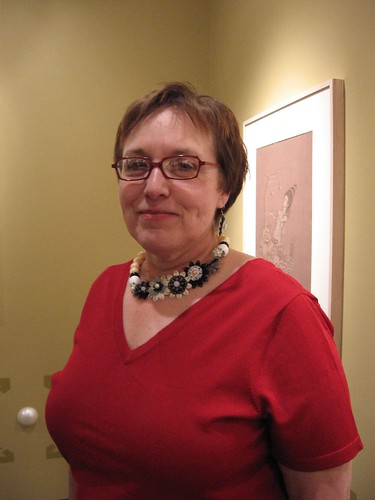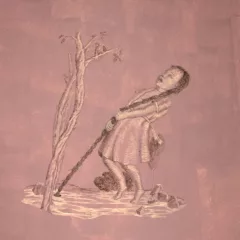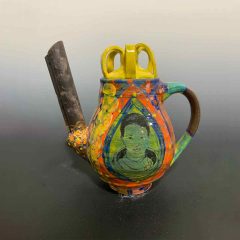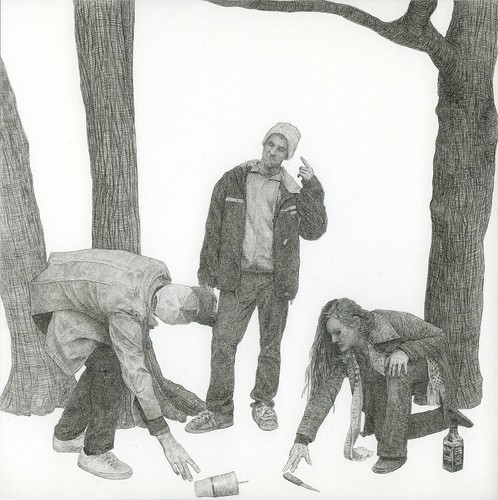
First Friday began with a bang for us. We started the evening at Gallery Joe, and really could have stayed there for the night. Two solo exhibits of drawings of Rob Matthews and of Marilyn Holsing each asked questions about responsibility and morality and human nature. They also successfully argue that drawing has become a major medium, capable of handling the kinds of important messages that used to belong only to painting, and rarely to etchings.
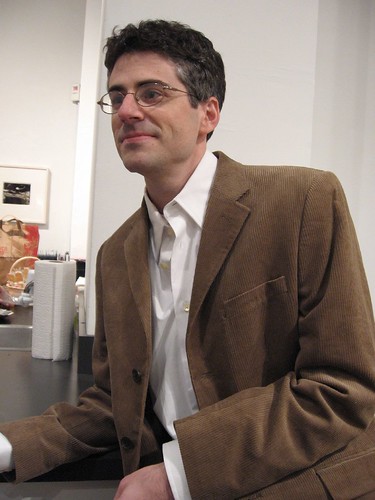
Rob Matthews at the opening of Knoxville Girl
Matthews’ Knoxville Girl is a series of 19 graphite drawings recounting an episodic tale of murder and conspiracy played out on streets that could pass for Philadelphia–or anywhere. Only one or two details–an honor box, a tree, plastic bags on the curb–mark the place and give a sense of space against an otherwise flat, blank backdrop. And the young people who carry out the horrific deeds rise to archetypes of youthful rashness and group villainy thanks to the blank backdrop.

Rob Matthews, Knoxville Girl-Odds And Evens, sordid issues being determined by a game. image courtesy the artist
The story plays out like a fuzzy ballad plot–Frankie and Johnny or Silver Dagger. The groupings of figures suggest tableaus in religious paintings although garbed as modern youth. This is a morality play, dramatizing the contrast between depravity and what’s pure and perfect. The anguished moral judgment here reminds me of Goya and Los Caprichos, yet Matthews remains on the fence at the same time. The ambiguity in the action and in the guilt is thoroughly contemporary.
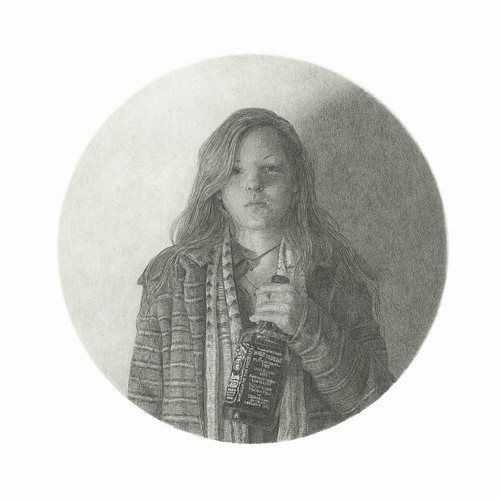
Rob Matthews,Knoxville Girl-Shannon
image courtesy the artist
I asked Rob if he was thinking about the murder rate in Philadelphia when he did these. Here’s some of what he had to say:
The rising murder count in Philly definitely was in my mind as I working on these (I started them in earnest in mid-to-late January and finished everything in late July). 200+ homicides occurred in Philly during that time. Though that was going on, that isn’t the primary influence for the drawings.
…
The most direct line into this around Philly would have been when Jason Sweeney was killed a few years ago in Fishtown by three of his best friends and a girl that lured him into a vacant lot under the promise of sex. When he got in the lot and started to take off his clothes, his best friends beat him to death and stole the money he’d been given that day (he was paid in cash that day at his construction job). Even that wasn’t the impetus for the work (and oddly enough there is a comic guy around here turning that story into a book) but it is a sad parallel to what inspired me- a true murder in Knoxville when I was in school). Here’s a link to Kevin Colden’s site: http://hottencolden.livejournal.com/13015.html. That’s the comic that is being made right now. I found out about it right as I was wrapping up this series.
When we were there, some of the work had sold. I was hoping some institution would snap it all up as a set. While the drawings stand alone, they are also part of a cycle that deserves to be preserved as a unit. They are cinematic or perhaps a brief graphic novel.
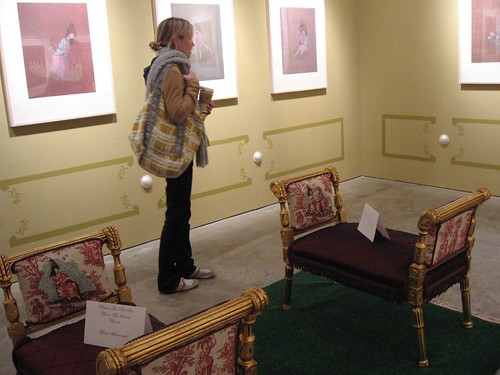
Marilyn Holsing, La Vrai Histoire de Jeune Marie, installation detail
Also at Gallery Joe and deserving props of its own is Marilyn Holsing’s installation in the vault, La Vraie Histoire de Jeune Marie. Holsing has set her exhibit of 17 multi-media drawings in Marie Antoinette’s boudoir, featuring toile draperies, upholstered benches, wall moldings and mirrors.
The installation itself captures the frivolity that we associate with Marie Antoinette. The drawings are parodies of simpering genre drawings and etchings–vignettes of country idylls illustrating children at play and farmers in the field. And like Kara Walker, Holsing is using parody of vernacular art forms to say something about contemporary and historical values.
Holsing is an embroiderer, and the drawings capture the look of embroidery, with small stitch-like slashes of paint accumulating to create an image.
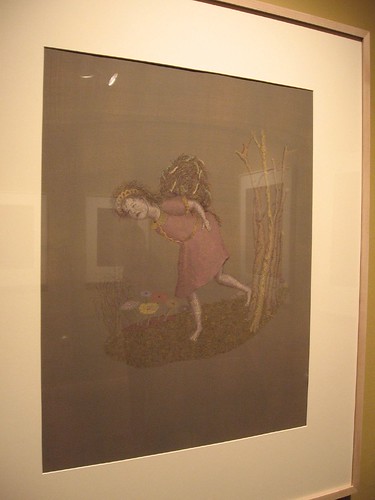
Here La Jeune Marie lugs her big head of hair on her back.
Each image captures the future queen in her self-absorption, decked out with a ridiculous coiffeur that is half white queen from Alice and Wonderland, half Mme. Pompadour. She loses her mountain of hair in one. In another she has an army of legs coming out from under her skirt.
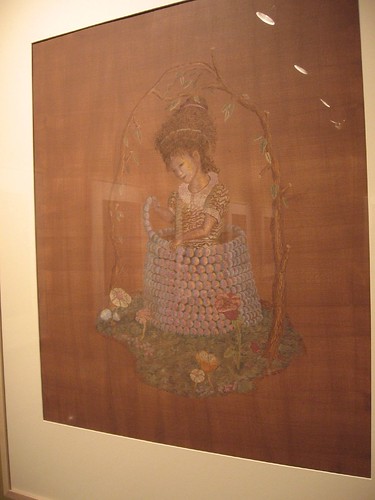
Here Marie Antoinette traps herself in a playhouse of pearls
The subject is the culture behind Marie Antoinette’s insensitive comments that have made her a symbol of aristrocratic boorishness. At the same time, the past becomes a template for the present, and although we may not be aristocrats, so many of us have giant flat-screen TVs and i-Pods, computers, and a few other possessions too many.
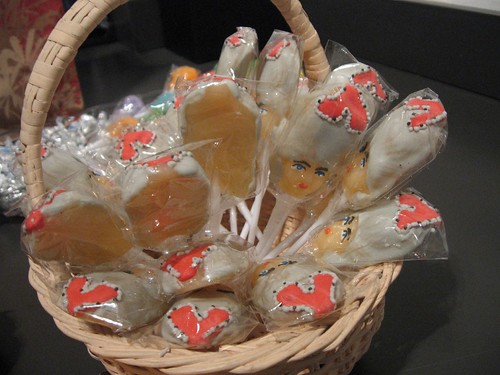
Marie Antoinette lollypops were served up for the opening.
I like the way both of these exhibits revisit the past and rewrite it to visit contemporary–and eternal–issues. Holsing wonders about excess and privilege. Matthews wonders about violence and the souls of teenagers–as well as the souls of us all.
These drawings make a convincing argument for the importance of drawings in contemporary art. The work here has gravitas, beauty and ambition.


